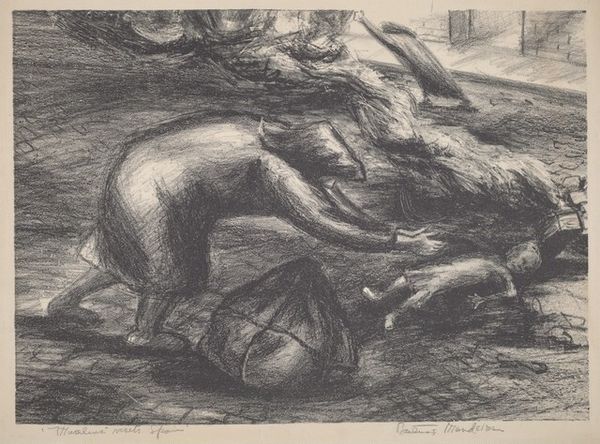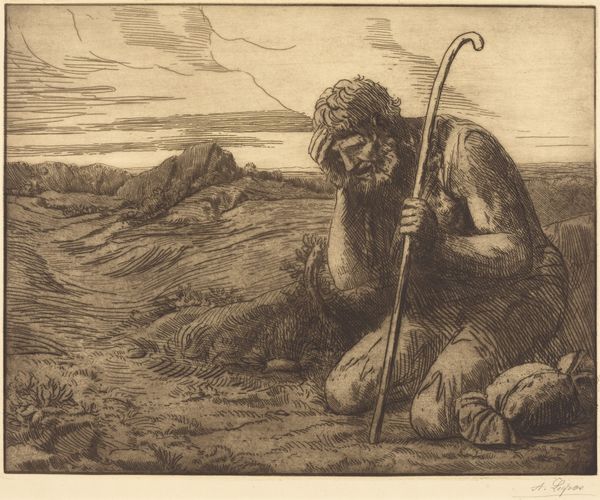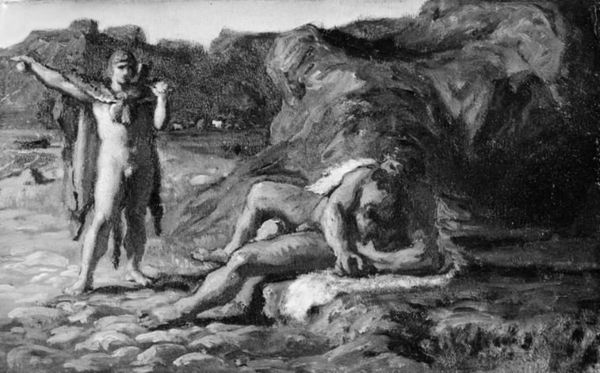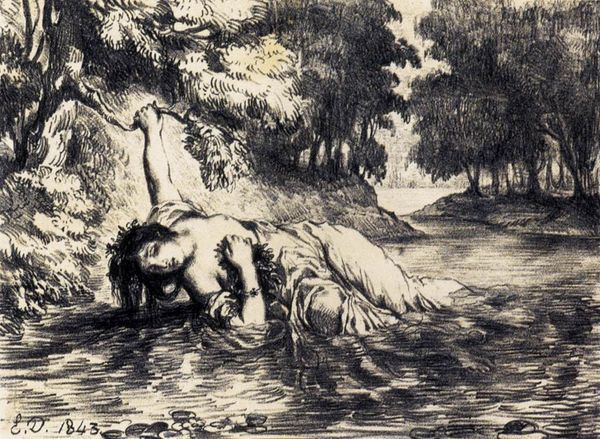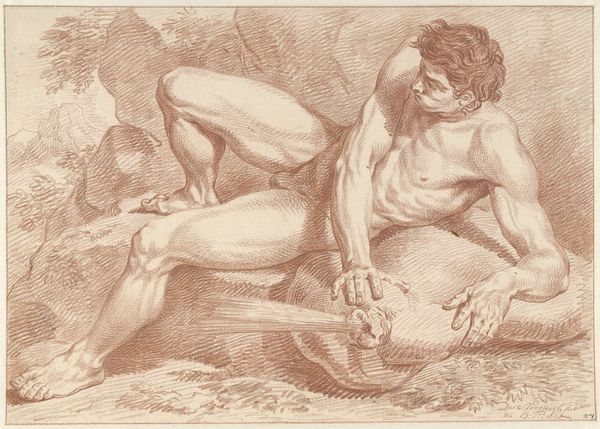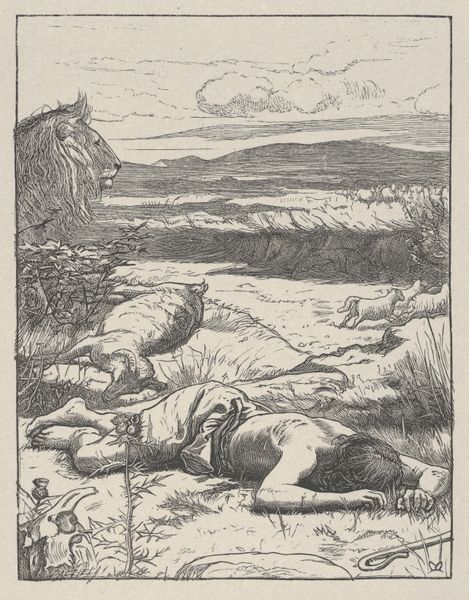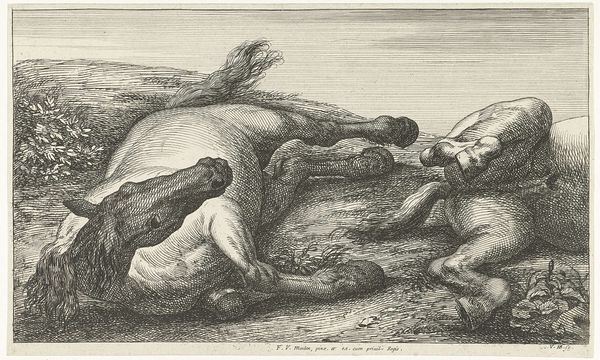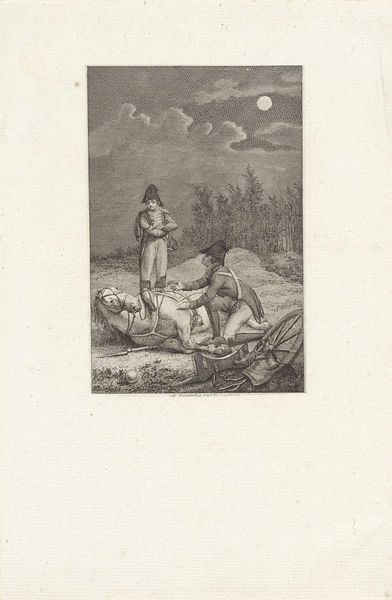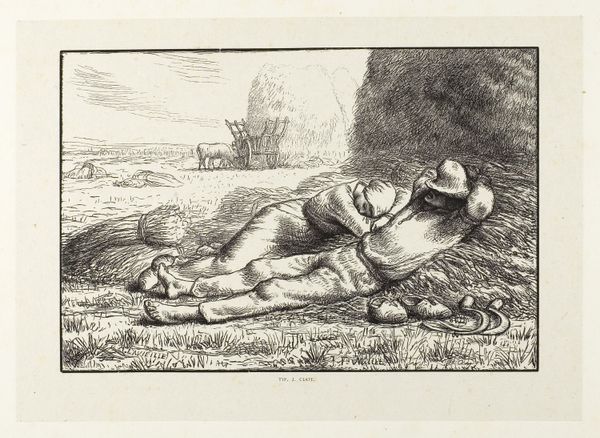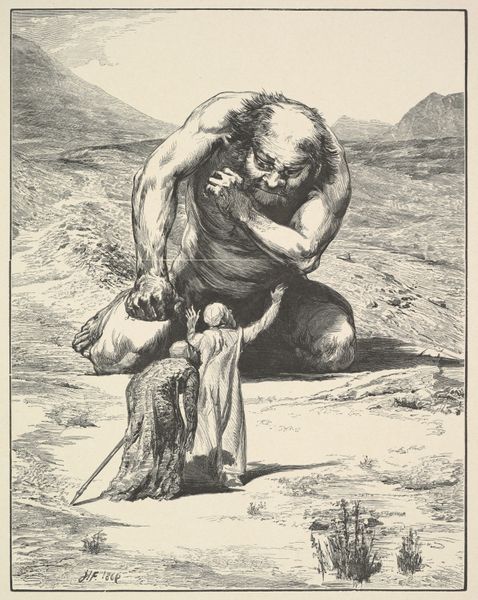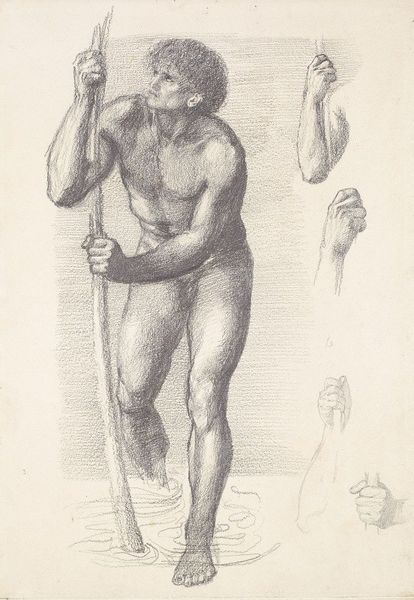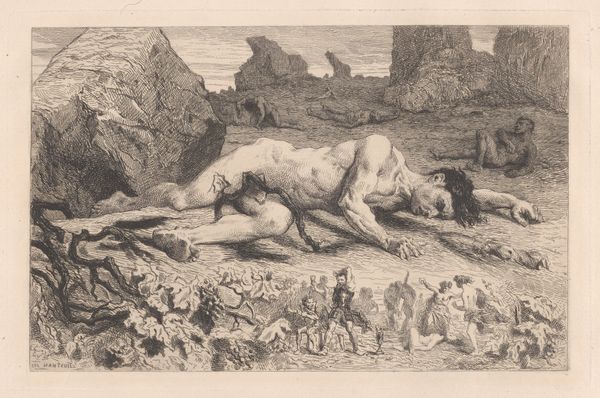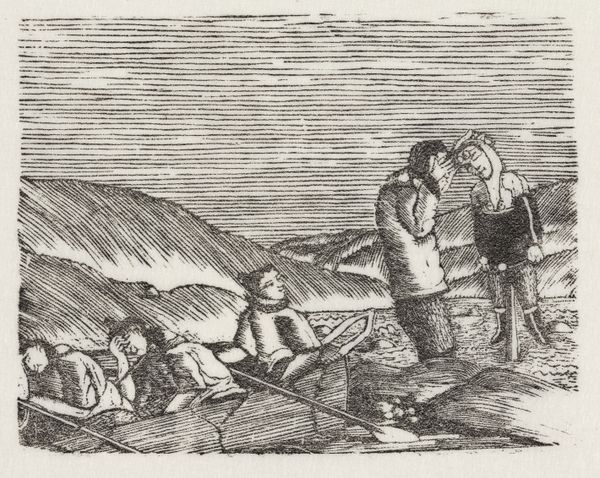
drawing, charcoal
#
portrait
#
pencil drawn
#
drawing
#
landscape
#
charcoal drawing
#
charcoal art
#
pencil drawing
#
symbolism
#
portrait drawing
#
charcoal
#
academic-art
Copyright: Public Domain: Artvee
Editor: This charcoal drawing, “Orpheus,” was created by Pierre Puvis de Chavannes in 1883. The figure’s pose feels very burdened; what story do you think the materials and method of production tell here? Curator: Think about charcoal itself. It's created through burning, a reduction to bare essence. Look at the paper, the tooth of it; it grabs and holds the charcoal, a record of the artist’s physical labor, the push and pull, creating light and shadow. The subject, Orpheus, is known for his music, but here he's silent. Does this suggest a commentary on the consumption of art and the artist’s role in a rapidly industrializing society? Editor: That's a very different take than I expected. So, instead of focusing on Orpheus’s mythological context, we are focusing on the implications of using charcoal as medium? Curator: Exactly! Chavannes is highlighting the physicality of creation. Note the strategic blurring, the rough unfinished edges. What does that say about idealization versus the actual messy process of art making and the artist's role within his era? Is it rejecting slick, commercial academic styles? Editor: So it's not just *what* is represented, but *how* it's represented and what that implies about labor. I’d never thought about the “tooth” of the paper before as contributing to the meaning, that's fascinating! Curator: It emphasizes that every mark, every material choice, is a deliberate action tied to both the physical and societal landscape in which it was conceived.
Comments
No comments
Be the first to comment and join the conversation on the ultimate creative platform.
